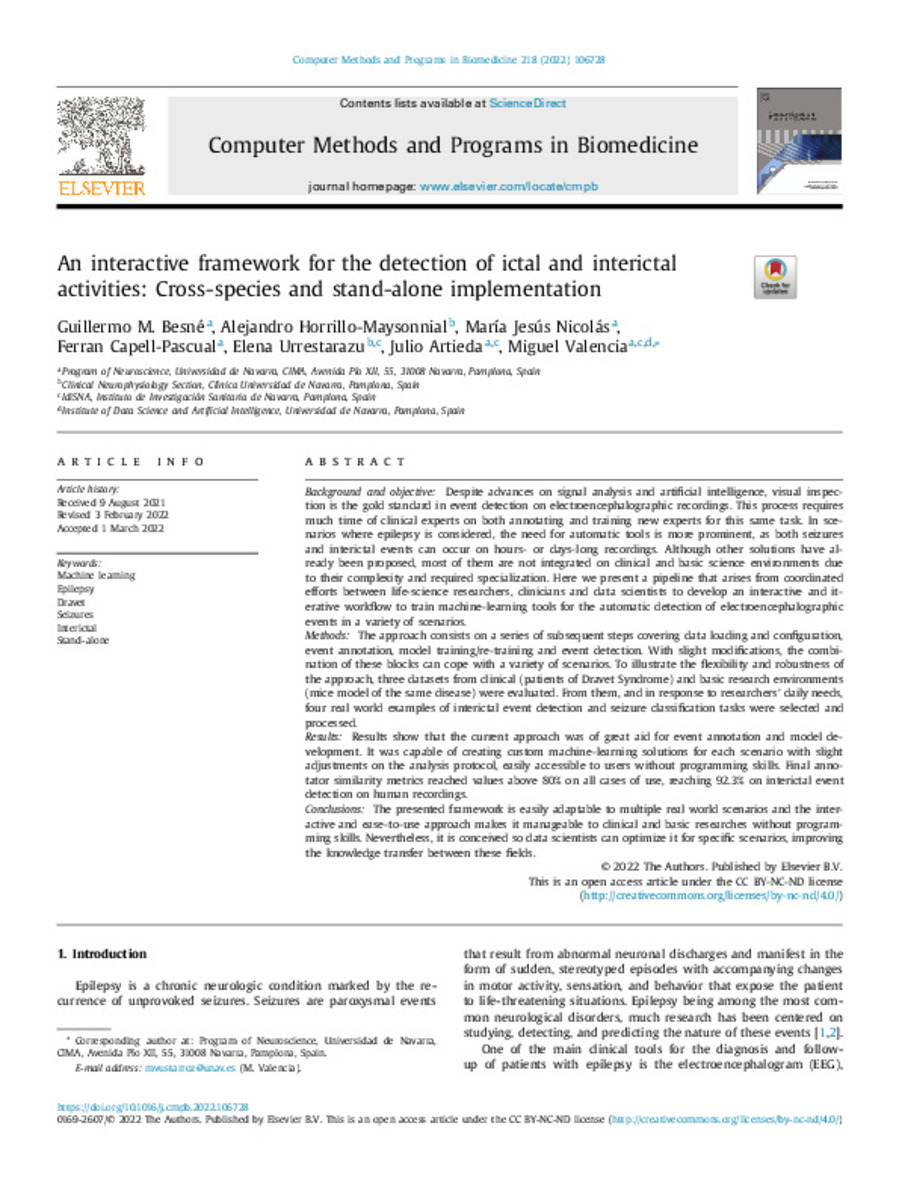An interactive framework for the detection of ictal and interictal activities: cross-species and stand-alone implementation
Palabras clave :
Machine learning
Epilepsy
Dravet
Seizures
Interictal
Stand-alone
Fecha de publicación :
2022
Nota:
This is an open access article under the CC BY-NC-ND license
Cita:
Besne, G. (Guillermo); Horrillo-Maysonnial, A. (Alejandro); Nicolas, M. J. (María Jesús); et al. "An interactive framework for the detection of ictal and interictal activities: cross-species and stand-alone implementation". Computer Methods and Programs in Biomedicine. (218), 2022, 106728
Aparece en las colecciones:
Estadísticas e impacto
0 citas en

0 citas en

Los ítems de Dadun están protegidos por copyright, con todos los derechos reservados, a menos que se indique lo contrario.









